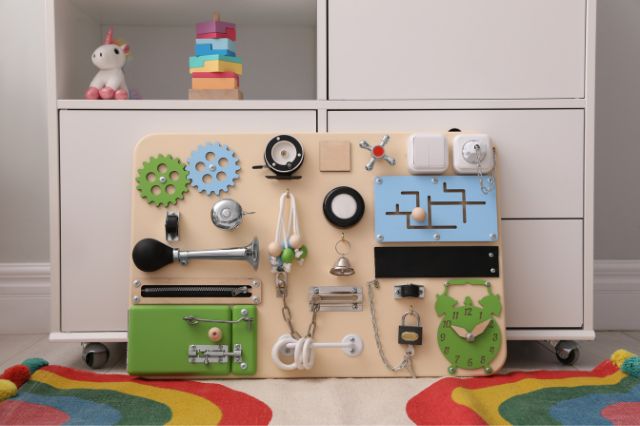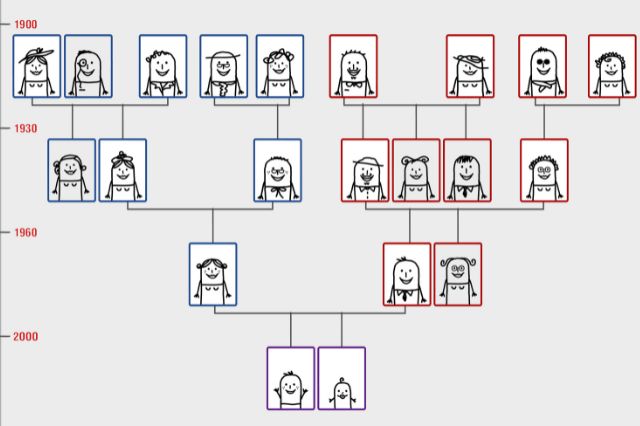Family
How to Handle the Child Custody Process Smoothly?

Child custody exchanges can be a very challenging process. Nobody wants themselves or their kids to go through legal affairs, especially when it comes to deciding where and how the child should live. However, in most cases, the custody process can occur smoothly without any judge’s interference.
In 90% of cases, parents settle this between themselves, where 51% of parents feel that the mother should have the custody. If you and your partner are also facing issues regarding custody of your child, here are some tips to handle the process smoothly.
1. Follow the parenting plan
This probably looks very obvious, but you should try to follow the parenting plan as closely as possible. A parenting plan is a simple agreement between the two parents that covers practical, legal, and financial issues regarding responsibilities towards their children as approved by the court.
Following this plan will help you to avoid last-minute hassles and prevent stress for you and your children.
2. Keep things simple
Child custody can be very simple if both parents handle things responsibly. Try to maintain very few transitions while moving the child from one parent’s house to the other. It might be difficult, but maintaining a time-sharing schedule is necessary.
Try to maintain the same exchange locations to help relieve stress for your kids. Keeping the parenting plan or even the time-sharing schedule in an easily accessible place can be beneficial.
3. Always be on time
Being punctual is a necessary quality in all aspects of life, but especially when it comes to taking care of your children.
This will prevent arguments between you and your co-parent and also give your children a sense of security. If your child knows you will always be on time to pick them up or drop them, the bond between you both will be stronger.
4. Keep updating your co-parent
No matter how much you try to follow your schedule, things tend to get in the way. So keep your co-parent updated at all possible times. In case of an emergency or delay, your co-parent should know when and how to handle the situation.
Also, let your children know about the sudden change of plans so they can be mentally prepared for a different schedule.
5. Have school as the exchange center
If you and your co-parent need minimal time to meet and greet each other, your child’s school can be a good place for exchange.
This will create a smoother transition for your children who will be busy in school or with their friends and probably won’t notice their parents. Be sure to let your children know which parent shall be picking up or dropping them at school.
6. Choose neutral locations for exchanges
Many times, schools or other places don’t allow exchanging. In this case, parking lots, malls, or other public places can be a good idea.
This will also limit the time taken to travel for both the parents. In case you’re not sure about the laws of where and when to drop off or pick up your child, consult Hickey Lawyers.
They will guide you through the entire process of child custody, the rules, and the terms and conditions, making the custody process much smoother for both of you.
7. Be respectful
If you have decided to drop your child off at your co-parent’s house, you must be respectful when inside.
Similarly, do not insult or be rash to your co-parent if they visit your house for the transition. Do not enter the house unless you are invited in, and be polite. If you see your co-parent with their own partner or spouse, be polite to them too.
Over to you…
Exchanges can be especially difficult for your children, who have very little idea of what’s going on. Encourage your children to share their emotions during these trying times, and don’t be angry at them if they seem rude or irritable. Instead, both you and your partner should sit down with them and talk it out.
Oftentimes, if the relationship between the parents is strained, the child tends to prefer one parent more and be disrespectful towards the other. You must always ask your children to refrain from doing that. A healthy mode of communication is the key to a smooth child custody process.
Family
Baby Busy Board: A World of Exploration for Tiny Fingers


Welcoming a new phase of exploration in your baby’s life can be as exciting as it is daunting.
We recognize the significance of each developmental milestone, and that’s where the baby busy board comes into play. This incredible tool is not just another toy; it’s a hub of learning, discovery, and skill enhancement for your little one.
Understanding the Baby Busy Board
A baby busy board is a carefully designed panel with a variety of objects that babies can twist, turn, open, close, and manoeuvre. These boards are a sensory delight, offering textures, colors, and activities that are tailored to captivate and educate infants and toddlers. The beauty of a busy board lies in its simplicity and its profound impact on developmental skills.
Why Choose a Busy Board for Your Baby
In the early years, a child’s brain is like a sponge, absorbing everything around it. The busy board is a wonderful tool to harness this potential. Here’s why:
- Motor Skill Development: Busy boards encourage fine motor skills and hand-eye coordination as babies grasp, pinch, and manipulate various elements.
- Cognitive Growth: These boards challenge little minds, fostering problem-solving skills and understanding of cause-and-effect.
- Sensory Stimulation: Different textures, colors, and moving parts on the board stimulate sensory perception.
- Language Skills: As parents describe the board’s elements, babies learn new words and concepts, aiding in language acquisition.
- Safe Exploration: A busy board provides a safe environment for exploration, satisfying natural curiosities in a controlled setting.
Selecting the Perfect Busy Board
When choosing a busy board for your baby, consider the following:
- Age Appropriateness: Ensure that the board is suitable for your child’s age and skill level.
- Safety: The board should be made of non-toxic materials, with securely attached elements to avoid choking hazards.
- Variety of Features: Look for a board with a mix of activities, such as locks, latches, dials, and tactile elements.
- Durability: High-quality materials ensure that the board can withstand enthusiastic play.
Integrating the Busy Board into Daily Play
The best way to introduce a busy board is to incorporate it into daily playtime. Show your baby how to interact with the board, and let them explore at their own pace. It’s a wonderful opportunity for you to engage with your child, guiding them and observing their progress.
The baby busy board is more than just a toy; it’s a cornerstone in your child’s developmental journey. By integrating a busy board into your baby’s playtime, you’re setting the stage for a lifetime of learning, exploration, and fun. Remember, every twist, turn, and discovery on the busy board is a step towards your child’s bright future.
Family
Uncovering the Benefits of Researching Your Family Tree


Have you ever wondered what it would be like to know more about your family history? Have you considered researching your family tree, but weren’t sure how to get started? If so, then learning the benefits that comes with this could help motivate and encourage you in this endeavor. Not only does putting together a family tree provide an opportunity for self-discovery and improved understanding of one’s heritage, but it can also simply give people something fun and interesting to do during their spare time. Let’s take a closer look at some of these benefits now:
A New Place to Call Home
Discovering that you have family in a foreign country, or who have come over to where you live but have their roots abroad, can offer a wealth of benefits, both emotionally and financially. With the rise of international travel, global communication has become easier, making it possible to stay connected with relatives living abroad. Establishing roots in another nation can open up new opportunities for education and cultural exchange, allowing individuals to broaden their worldview and gain valuable experiences.
As exciting as the prospect of finding family in a foreign country may be, some may choose to take their connection one step further by pursuing Citizenship By Descent. This type of citizenship grants access to certain rights and privileges not afforded to those who do not have ancestral ties to the country in question. Additionally, citizens by descent are often eligible for a variety of benefits. These can include access to government-funded healthcare, exclusive education opportunities, and take advantage of their ancestral nation’s tax advantages or gain inheritance rights that would otherwise be unavailable to them.
More Family Members
For many families, reuniting with distant relatives can be a life-changing experience. Through researching and building out a family tree, it’s possible to discover ancestors that have been absent from a family for generations and start to really piece things together. It’s an opportunity for people to learn more about the history of their family and gain insight into where they come from. With a deeper understanding of family history, these distant relatives are suddenly close enough to reach out and make contact. This can even lead to meeting them in real life too, giving families the opportunity to strengthen familial ties that have been lost over the years.
Adding distant relatives to the family tree opens up the possibility of family reunions and gatherings which now include these previously unknown relatives. This gives the whole family the opportunity to have a greater and more meaningful connection with someone who they would have otherwise been unable to meet or build a bond with. The new family member may also have been unaware of the connection, meaning this may be the first time they see people who look like them! This can be an incredibly emotional experience for them and family members should be prepared to take things slow and answer any questions they may have before they feel comfortable opening up.
A Better Understanding of Self
Family trees can be an incredibly powerful tool for helping people gain a better understanding of themselves. By tracing one’s ancestry, individuals can begin to piece together their identity, understanding not only their immediate family but also those who came before them. A family tree provides a clear chronology of generations and relationships that can give people an insight into their past and the individuals who came together to enable them to come into the world.
Once you uncover names, you can start asking questions and researching further to paint a picture of them in your minds. Perhaps you will discover that one of your unique traits or interests comes from someone you have discovered or, if your family is known for having a particular business, where this comes from. Family trees mean that it is possible to uncover the roots of a family business, as well as gain insights into the experiences that shaped it, such as resources, financial situations, and even situations where they had to move in order to make a better life for themselves.
Strengthen Existing Bonds
Studying a family tree can be a great opportunity to strengthen bonds within a family. By researching their ancestry, family members can learn more about the history and culture of their families, bringing them closer together. This experience can also be enlightening and give family members to share stories they perhaps have never shared before because, until now, they may have forgotten about them, or they were just never relevant to anything in particular.
Family trees can be a wonderful opportunity for families to come together and collaborate on a meaningful project. Each branch of the family can contribute by researching their own lineage, which can give them insight into how their ancestors lived, what traditions they kept, and the stories that were passed down from generation to generation. This can offer great insight and explain to some why certain things in the family are the way they are. Once the tree is complete, families can then use any newfound knowledge to connect more with distant relatives and build bridges, whilst knowing that future generations will also be able to look back on the tree and learn about where they come from.
Final Thoughts
In conclusion, having a family tree can be an incredible way to learn more about your ancestry and create meaningful connections with relatives. It’s also great for teaching children the importance of their heritage and helping them gain appreciation for how far back their roots go. With all these benefits in mind, it may be worth considering creating or joining a family tree if you haven’t already done so! Whether you’re looking to stay connected with distant cousins or want to explore your lineage further, building a family tree is one of the best ways to uncover stories from generations past while still honoring those who came before us.
Family
Helping Your Parents Make the Decision to Move Into Care: A Guide


As people are living into their late 70s, 80s, and 90s, it is something that more people have to consider for their parents whether or not to move them into care.
Deciding whether or not a parent should move into care is a complex and sensitive matter that requires a lot of careful consideration. Of course, in most cases, the decision is made after all home-help options have not worked or cannot be adapted to work, meaning that more care is required.
So, how do you (and potentially your siblings) and your parent(s) decide whether or not it is time for them to move into care?
Health and Well-being
The first thing to consider is the health and well-being of your parent. Are they able to perform their daily activities without assistance? Are they in good health, or do they have any chronic conditions that require regular medical attention? A professional medical assessment can be helpful in determining if they require additional support. Remember, care homes in Barnet will be able to offer them the help that they need to maintain their independence and will always inform you of any changes that are being made to their care plan.
Safety Concerns
Sadly, in Europe and the US, there are far few bungalows available, meaning that most older people live in homes with stairs. You will need to assess the safety of the current living environment for your parent. Do they live alone and are at risk of falling or other accidents? Is the home accessible, with any necessary modifications or equipment in place, such as grab bars or stairlifts? If all of this is in place, and there are still issues with their ability to move around, then it may be time to talk to them about moving into some kind of supported accommodation.
Social Isolation
You should also look at whether your parent is socially isolated or not. Do they have a network of family, friends, or neighbours nearby? Are they able to participate in social activities or hobbies, or do they feel lonely and disconnected? Social isolation can have a significant impact on a senior’s physical and mental health and can speed up mental deterioration.
Financial Considerations
Of course, wanting to move your elderly parent into care is one thing; paying for it is something else! Moving into care can be costly, and the costs may vary depending on the type of care needed, as well as where you live. Determine the cost of care and assess whether it is financially feasible for your parent. Consider what financial resources they have, such as pensions or savings.
Personal Preferences
If they are capable of making the decision, then you will need to respect your parent’s wishes and preferences. Some seniors prefer to stay in their own homes, even if it requires additional support. Others may prefer to move into a care facility where they can receive additional assistance and socialize with peers. Consider the availability of family support. Are you able to provide care for your parent, or is there another family member who can help? What level of support can you provide, and is it sustainable in the long term?
-



 Captions3 years ago
Captions3 years ago341 Sexy Captions to Fire Up Your Instagram Pictures
-



 Captions3 years ago
Captions3 years ago311 Night Out Captions for Instagram and Your Crazy Night
-



 Captions3 years ago
Captions3 years ago245 Saree Captions for Instagram to Boost Your Selfies in Saree
-



 Captions3 years ago
Captions3 years ago256 Best Ethnic Wear Captions for Instagram on Traditional Dress
-



 Captions3 years ago
Captions3 years ago230 Blurred Picture Captions for Instagram
-



 Captions3 years ago
Captions3 years ago275 Deep Captions for Instagram to Express Your Thoughts
-



 Quotes3 years ago
Quotes3 years ago222 Nail Captions for Instagram to Showcase Your Fresh Manicure
-



 Captions3 years ago
Captions3 years ago211 Laughing Captions for Instagram | Laughter Is the Best Medicine







